- Abstract
- Harvest yield of Shishito peppers among summer and autumn peppers (main data).
- Harvest volume of Shishito peppers, one of the summer and autumn peppers (by prefecture).
- Planted area of shishito peppers, one of the summer/autumn pepper varieties (main data).
- The area planted for shishito peppers, one of the summer/autumn pepper varieties (by prefecture).
- Shipping volume of Shishito peppers among summer and autumn peppers.
- Reference
Abstract
Looking at the data on summer/autumn peppers, one of the fruit vegetables in Japanese agriculture, especially shishito peppers, we can see that the harvest volume in 2022 will be a maximum of 4.19kt nationwide, the cultivated area will be 263ha, and Kochi will have the highest shipping volume of 660t. Considering past trends, shishito pepper production has been relatively stable, with planting area and harvests increasing, while shipment volumes have fluctuated somewhat but show a steady demand. Since Kochi is the top in terms of shipping volume, it is likely that shishito pepper production is particularly active in this region. In addition, since demand for summer and autumn peppers remains constant, production is expected to continue in the future.
Harvest yield of Shishito peppers among summer and autumn peppers (main data).
Looking at data from 1989 to 2022 on the harvest volume of shishito peppers, a type of summer/autumn pepper in Japan, the peak was recorded at 7.9kt nationwide in 1992, and has since shown a downward trend. Current harvest yields are about 53% of their peak, indicating a clear decline in production. This trend is thought to be influenced by technological innovations in agriculture and changes in market demand. In addition, production volumes vary from region to region, with some regions experiencing thriving production while others are experiencing a marked decline. Additionally, demand for summer and fall peppers may be declining, which could be contributing to lower production. In the future, changes in demand and improvements in production technology are expected to affect harvest yields.
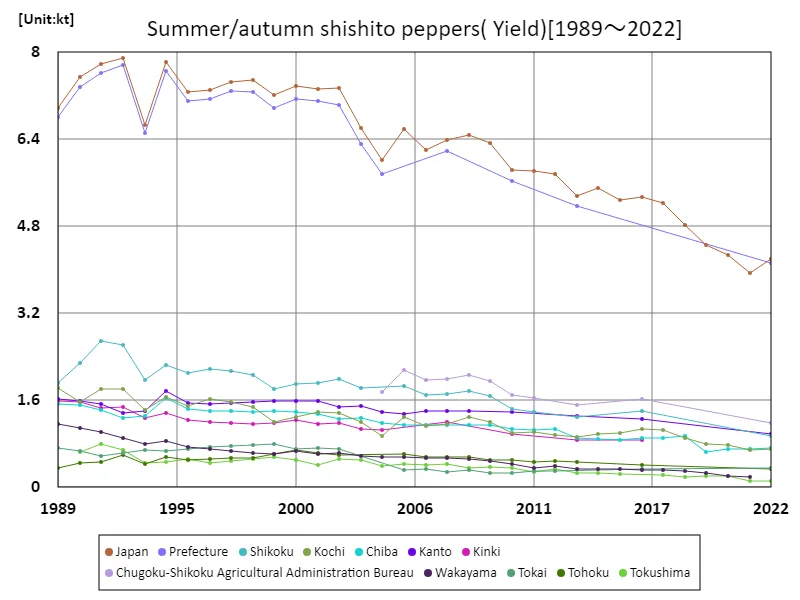

The maximum is 7.9kt[1992] of Japan, and the current value is about 53%
Harvest volume of Shishito peppers, one of the summer and autumn peppers (by prefecture).
Looking at 2022 data on fruit vegetable harvests in Japanese agriculture, Chiba Prefecture recorded the highest yield in the country at 725 tons, the current maximum harvest volume. Considering the characteristics and trends so far, it is clear that fruit and vegetable production varies from region to region, with certain regions being particularly active in production. Also, Chiba Prefecture had the largest number of produce, which suggests that fruit and vegetable cultivation in this region may play an important role. This trend is likely to be influenced by local climatic conditions, developments in agricultural technology, and changes in market demand. In the future, it will be necessary to formulate effective production management and market strategies while closely monitoring trends in production volumes and changes in demand in each region.
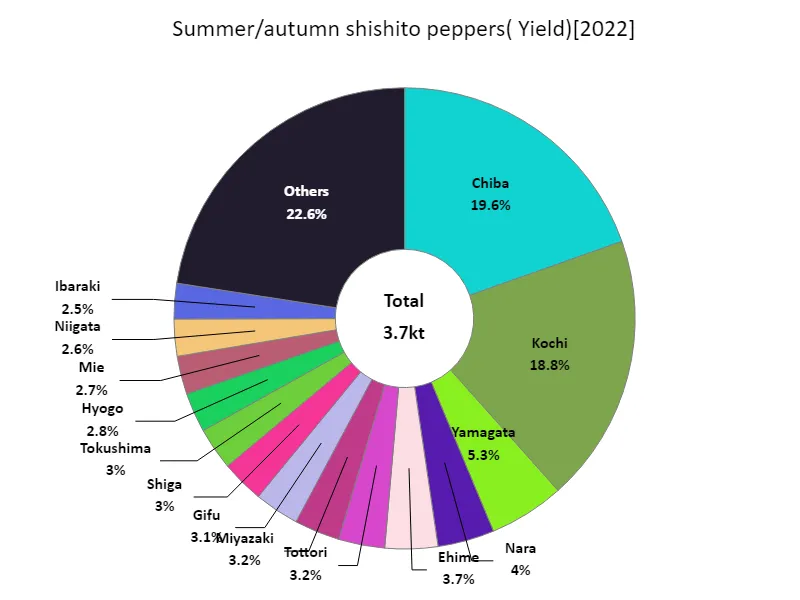

The maximum is 725t of Chiba, the average is 88.1t, and the total is 3.7kt
Planted area of shishito peppers, one of the summer/autumn pepper varieties (main data).
Looking at the area planted with shishito peppers, a type of summer/autumn pepper in Japan, based on data from 1989 to 2022, we can see that in 1994 the planting area nationwide peaked at 364 hectares. Since then, the area under cultivation has been on a downward trend, and the current cultivated area is only about 72.3% of the peak. This trend is thought to be influenced by structural changes in agriculture and changes in market demand. In addition, the cultivated area varies from region to region, with production thriving in some regions while in other regions there is a marked decline. Additionally, it is possible that demand for shishito peppers is declining, which may be contributing to the decline in planted area. In the future, changes in demand and improvements in production technology are expected to affect the area planted.
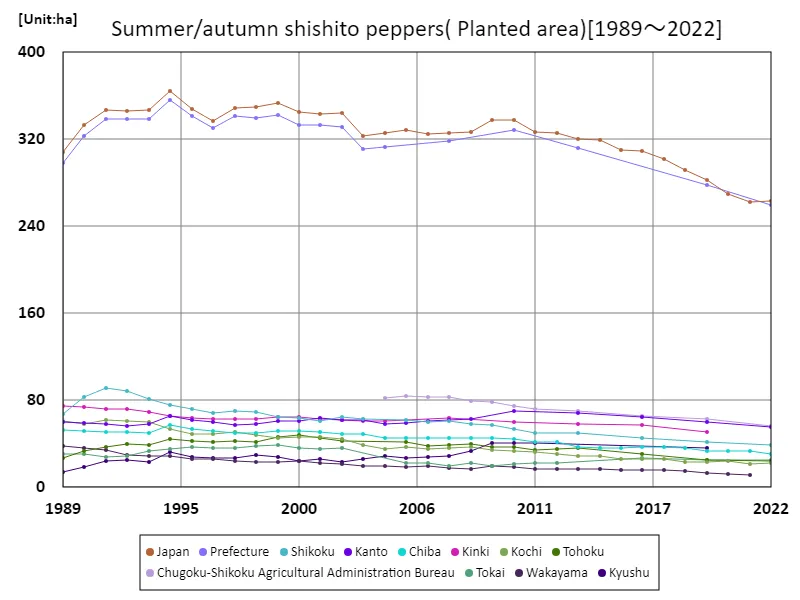

The maximum is 364ha[1994] of Japan, and the current value is about 72.3%
The area planted for shishito peppers, one of the summer/autumn pepper varieties (by prefecture).
Looking at data on the area of cultivated fruit vegetables in Japan in 2022, we can see that the largest overall cultivated area is in Chiba Prefecture, at 31 hectares, which is the current maximum value. Considering past trends, it appears that the area of land planted to fruit vegetables varies by region, with cultivation prevailing in certain areas. Chiba Prefecture had the largest number of produce, which may indicate that fruit vegetable cultivation in this region plays a particularly important role. In addition, the area of land planted with fruit vegetables is influenced by factors such as agricultural structure, local climatic conditions, and market demand, so there may be differences between regions. In the future, it will be necessary to develop appropriate production management and market strategies while closely monitoring changes in cultivated area and demand in each region.
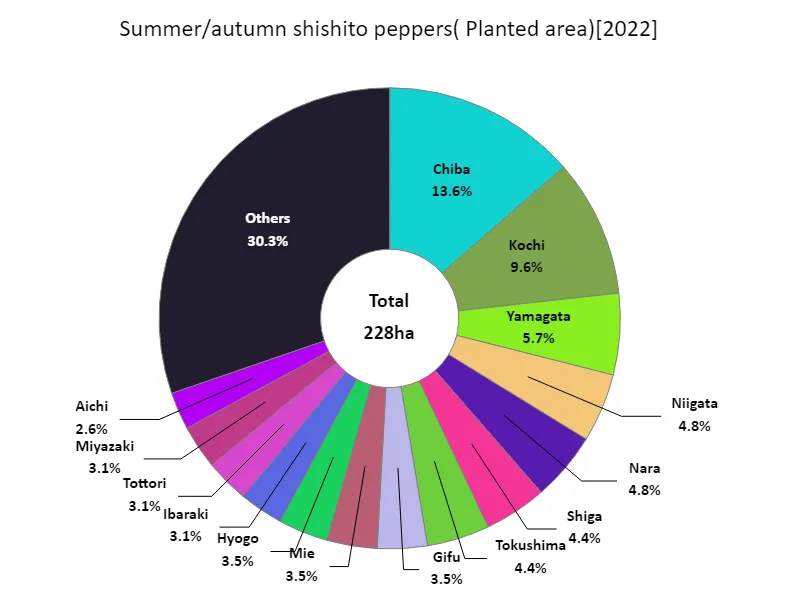

The maximum is 31ha of Chiba, the average is 5.43ha, and the total is 228ha
Shipping volume of Shishito peppers among summer and autumn peppers.
Looking at data on the shipping volume of Shishito peppers, a type of summer/autumn pepper, in Japan in 2022, the highest overall shipping volume was in Kochi Prefecture, at 660 tons. The average shipment was 67.7t, with a total shipment of 2.85kt. Considering the characteristics and trends so far, it appears that the shipping volume of shishito peppers varies greatly by region, with production in certain regions being more prosperous than in others. Shishito pepper production in the region may play a particularly important role, as Kochi prefecture recorded the highest shipments. Additionally, while looking at the average and total shipment volumes suggests that there is a certain level of demand overall, there are large differences between regions. These differences are thought to be due to differences in regional climatic conditions and agricultural techniques, as well as fluctuations in market demand. In the future, changes in demand and improvements in production technology are expected to affect shipping volumes, and it will be necessary to develop effective production management and market strategies while maintaining a balance between regions.
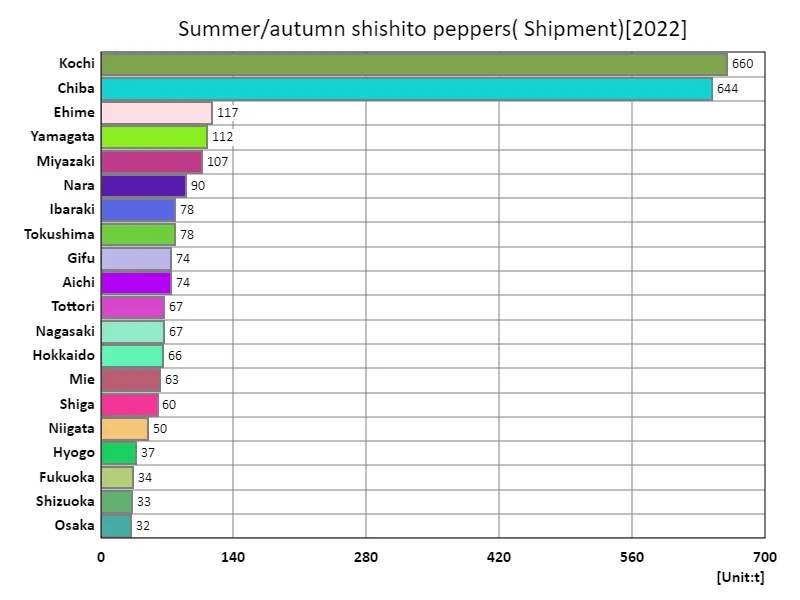

The maximum is 660t of Kochi, the average is 67.7t, and the total is 2.85kt
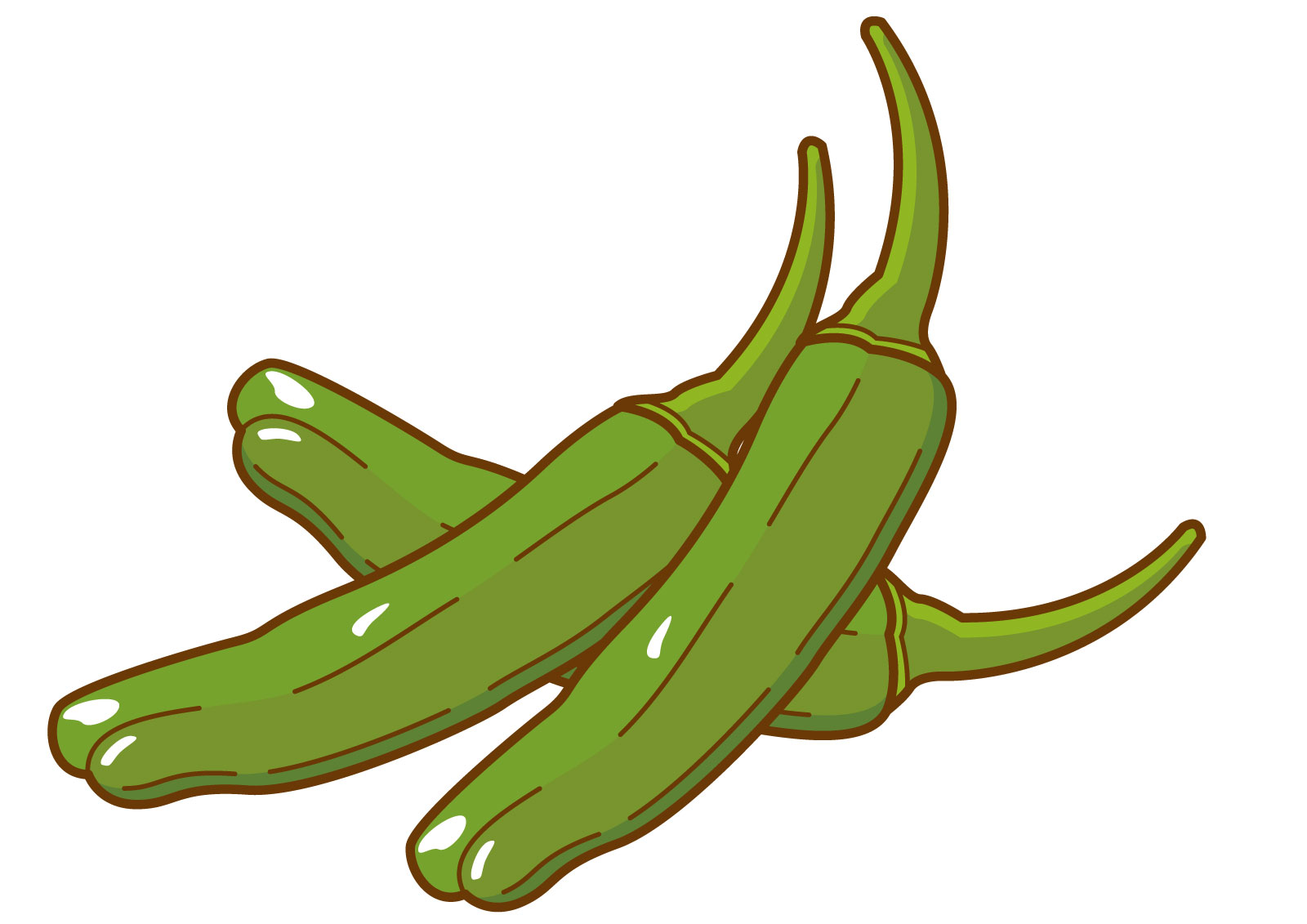


Comments